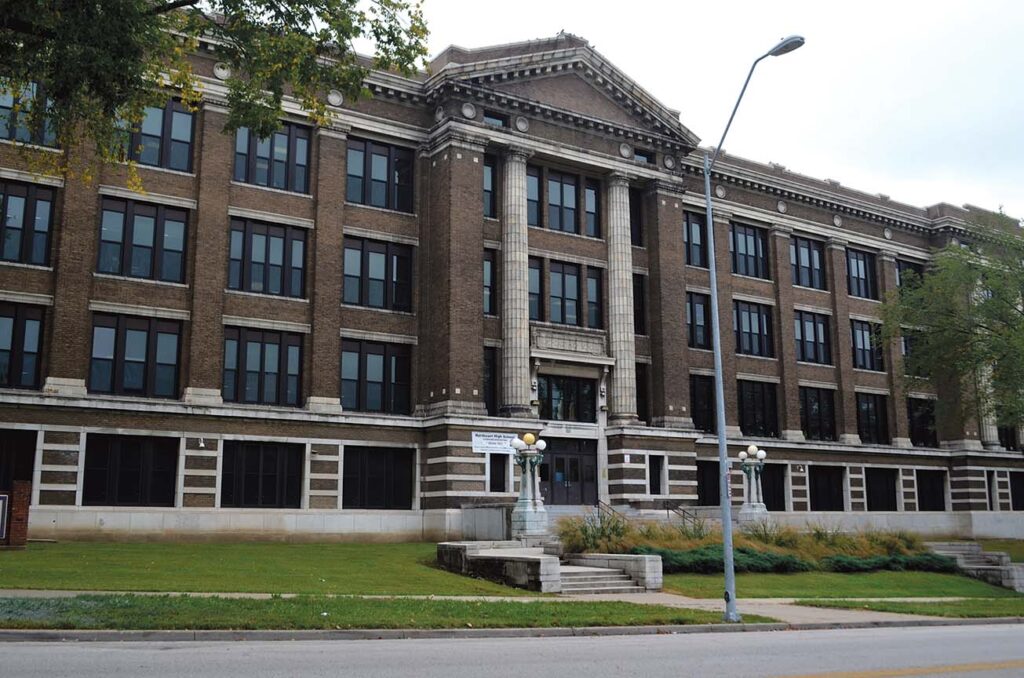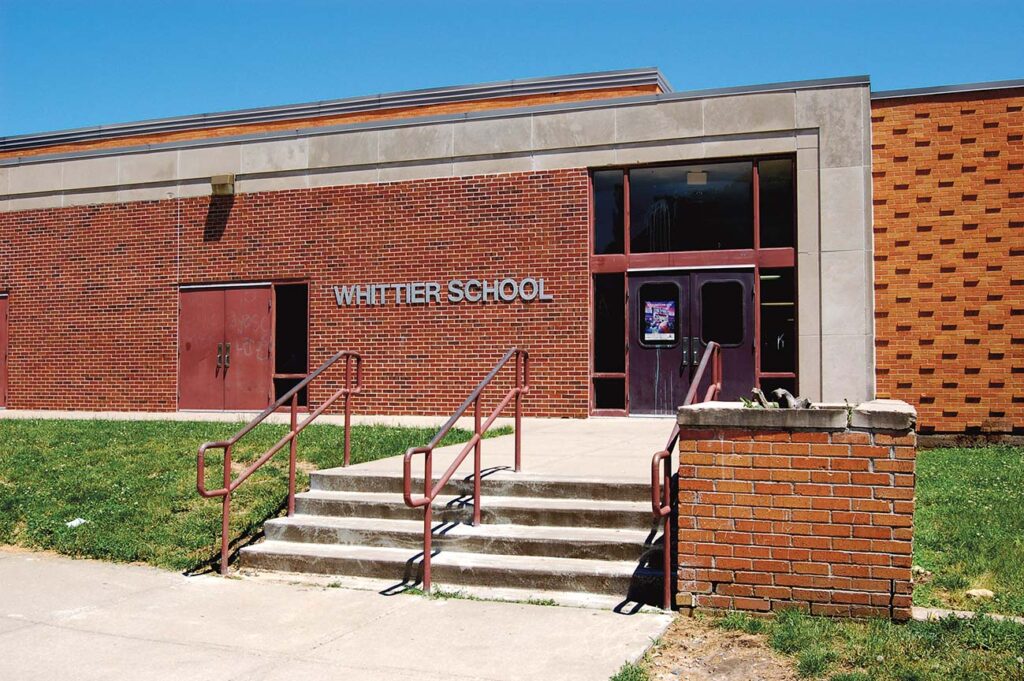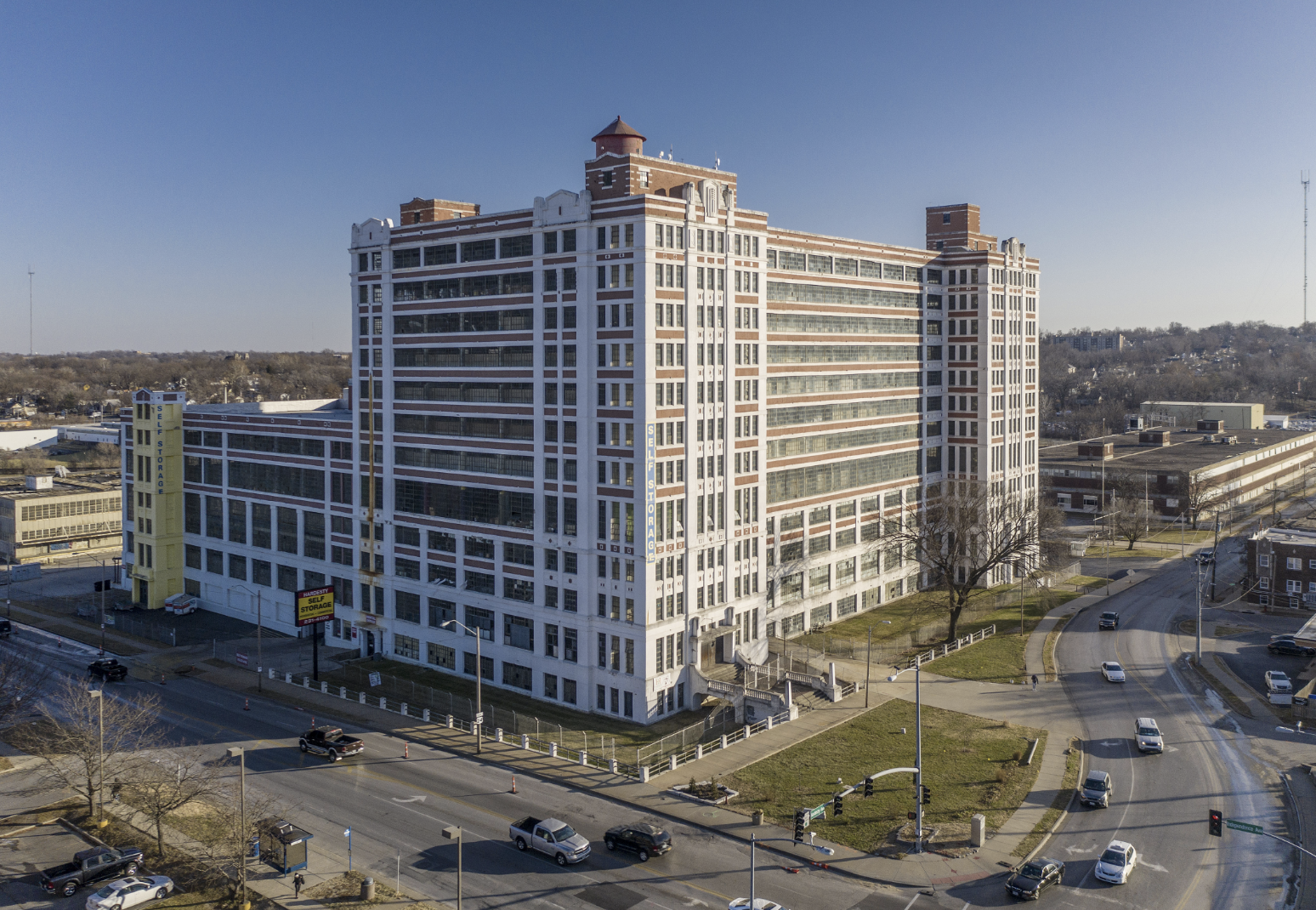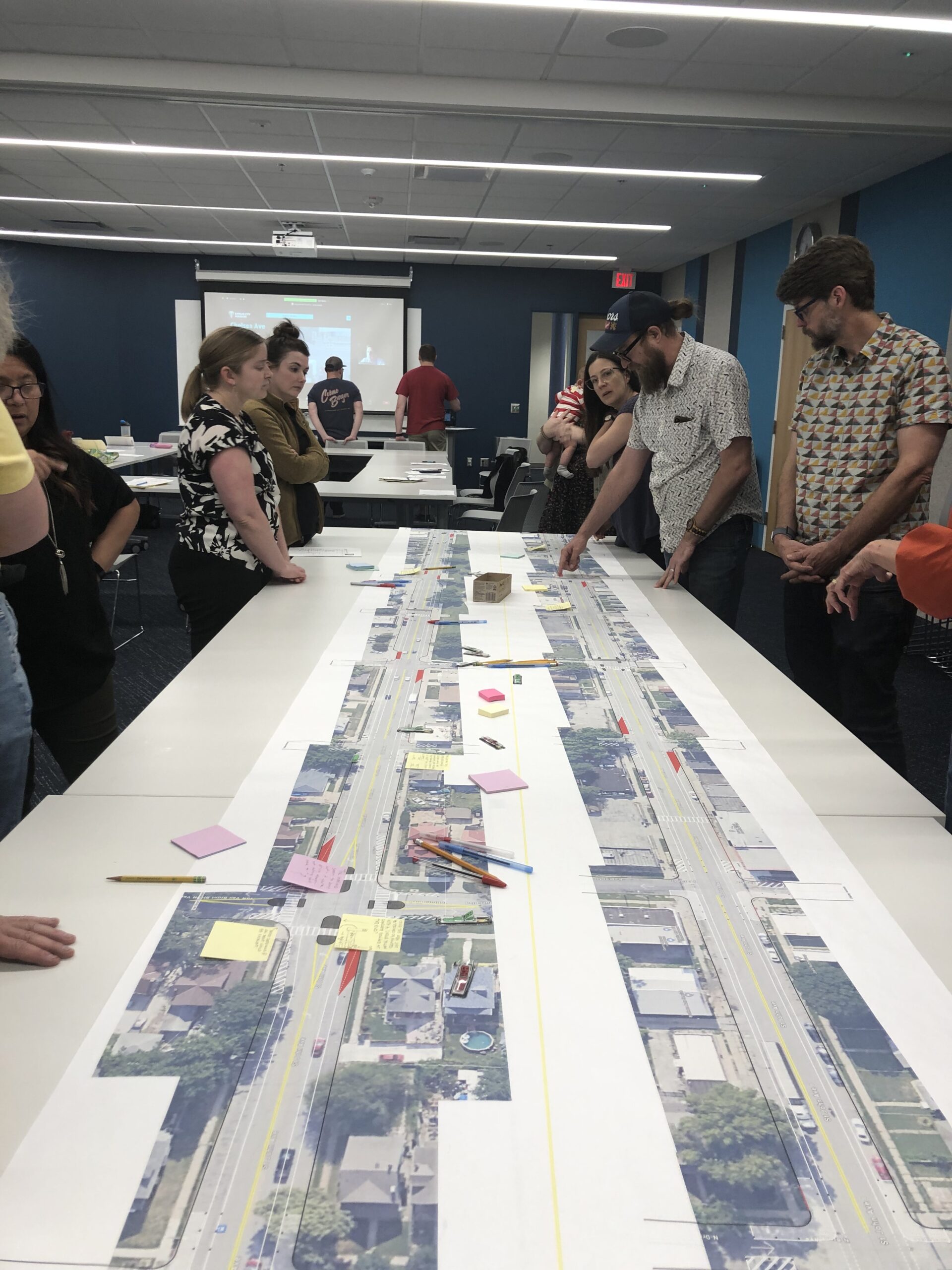
Abby Hoover
Managing Editor
Last week, the Kansas City Public Schools (KCPS) Board of Directors presented its recommendations for Blueprint 2030, an academic vision for KCPS that they say will give students the experiences they deserve.
With this plan, they want to expand access to the fine arts, create new project-based learning opportunities and even build new schools. However, there will be tradeoffs in the form of school closures and consolidations. In its presentation to the Board, MGT Consulting Group recommended 10 schools for closure and/or conversion, including two high schools and eight elementaries.
Among those schools headed for closure are three Historic Northeast institutions: Northeast High School, James Elementary and Whittier Elementary.
The plan calls for James Elementary to be closed in academic year 2023-24, part of Phase 1. With an enrollment of 236, the students would be transitioned to nearby Gladstone Elementary, contingent upon boundary assignment and location of specialized programs and services.
James Elementary at 5810 Scarritt Ave. is over a century old, and the district estimates it needs $4.37 million in deferred maintenance work. The district recommends repurposing the building.
Consultants rationalize the closure due to district projections showing a reduction in elementary school student enrollment, requiring fewer total elementary school facilities. The building is one of the oldest facilities in the district, and although it has strong academics – with an APR of 85.7% – it is small and has many functional challenges that impact educational suitability, including the cafeteria.
Whittier Elementary at 1012 Bales Ave. would be closed in Phase 2, the 2024-25 academic year. The 346 students would be transitioned to Phillips Garfield, Rogers or Trailwoods, with the same contingencies as above. In addition to reduced elementary enrollment, consultants cite the school as being underutilized with high levels of deferred maintenance totaling $6.28 million, adding that, despite an APR of 82.1%, the educational suitability of Whittier is less than that of neighboring schools. The building would also be repurposed.

With an enrollment of 605, Northeast High School’s Academic Progress Rate (APR) is 32.4%. Enrollment is trending down. The building itself has a score of 5.31, and a total deferred maintenance cost of $6.16 million. By 2030, the projected population change is less 2.6%.
Consultants rationalize closing the school, which was built in 1914, due to a reduction in high school student enrollment, requiring fewer total high school facilities. They cite the facility as being underutilized, continuing to decline in enrollment, and with low academic performance.
Northeast High School Students would be transitioned to East and Southeast High Schools, which would be expanded, during the 2026-27 academic year.
According to the recommendations, the school will be used as a swing site for building relocations during renovation and construction. Other KCPS use is to be determined.
The recommendations include building a new elementary school to replace the Northeast elementary schools that would be closed, contingent upon a bond passage or securing other funding.
Board President Nate Hogan voiced his concern in last week’s meeting about aspects of the project that hinge on the passing of a bond. The district hasn’t had a successful school bond since 1967. Other board members noted the importance of giving equal opportunities, like field trips and adequate facilities, to all students.
Alumni and Northeast residents are concerned with the fate of these community institutions, many remembering the demolition of Thacher School, and keeping an eye on Scarritt School, which the District is beginning the process of selling for repurposing.
KCPS’ new, simplified, Academic Vision is, “Connected, Empowered, Liberated: Every Child, Every Educator, Every Family, Every Day!” This includes Culturally Responsive Teaching, a research-based approach to teaching that connects students’ cultures, languages, and life experiences with what they learn in school, creating a rigorous curriculum and developing higher-level academic skills.
Many KCPS students come from marginalized groups who are often underserved and, historically, have underperformed academically. The district’s student body is 90% students of color, 24% learning English as a second language, 12% on Individualized Education Plan (IEP), and 89% qualifying for free or reduced lunch.
According to the district, if these recommendations pass, Blueprint 2030 would redirect $13.2 million to Academic Vision investments, provide access to expanded and equitable learning opportunities, create project-based learning that will help students make real world connections, give World Language exposure in elementary and expansion in secondary, add STEAM to elementary schools, introduce instrumental music to elementary and secondary schools, dedicate resources to field trips and outside of school experiences, create college and career pathways, build new or renovate facilities to support Academic Vision; increase clubs, activities, electives and class offerings; fully staff all KCPS schools and add more supports in schools for students and staff.

The recommendations are the culmination of years of engagement with students, staff and families. Over the next several weeks, the district will be reviewing this plan with stakeholders. Staff engagement has already begun, and community engagement will begin this week.
Interim Superintendent Jennifer Collier said, even with the district recently gaining full accreditation, the district will not see the growth it wants unless it makes changes.
“Right now it’s very difficult for us to do that, as our funds are currently spread across our system, where we have buildings that are not at capacity, where enrollments are low, where we struggle to have staff and the kind of programming that we want to have in buildings because we don’t have enough students to be able to provide that,” Collier said.
These recommendations are not final, and the district asks for the community’s input. This month and next, the district will host nine community conversations to gather feedback on the plan before the Board votes, likely in December. In addition to in-person events with a variety of translators, the district will host a virtual and a Spanish-only option. Meals and childcare will be provided. Interpretation services in Spanish, Somali, Swahili and Burmese will be available. Find a full list of meetings at
www.kcpublicschools.org.


















